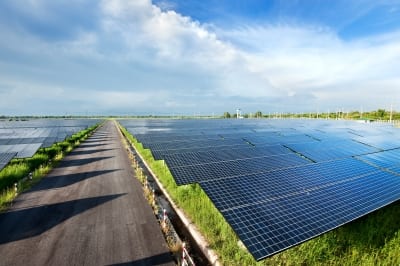Update 14/1/2013: This paper is part of the special Best of Macros 2012 issue, and is now free to read at http://www.best-of-macros.de!
 With the possibility of inexpensive, light-weight, and flexible electronics, organic solar cell technology has been touted as a serious contender to lead the next generation of photovoltaics. Over the past few decades, researchers have developed new polymeric materials that have gradually improved the efficiency of organic photovoltaics to the range of 7-9%. While impressive, the chemistry behind many of these advances is not yet fully understood. New insight into the structure-property relationships of the polymer and fullerene materials in these cells is required in order to push this technology into broad commercial use.
With the possibility of inexpensive, light-weight, and flexible electronics, organic solar cell technology has been touted as a serious contender to lead the next generation of photovoltaics. Over the past few decades, researchers have developed new polymeric materials that have gradually improved the efficiency of organic photovoltaics to the range of 7-9%. While impressive, the chemistry behind many of these advances is not yet fully understood. New insight into the structure-property relationships of the polymer and fullerene materials in these cells is required in order to push this technology into broad commercial use.
Rather than comprehensively reviewing recent work, Wei You and co-workers from the University of North Carolina at Chapel Hill provide commentary on relevant advances in the field, and forecast where researchers should look to enhance the efficiency of organic solar cells. Studies determining how the polymer interacts with fullerene derivatives are especially vital. By structurally modifying the polymer to reduce its lowest unoccupied molecular orbital (LUMO) level, utilizing electron-withdrawing substituents advantageously, and employing appropriate side chains, researchers can elucidate further aspects of polymer-fullerene interactions while ultimately developing materials that will achieve higher efficiencies.

















